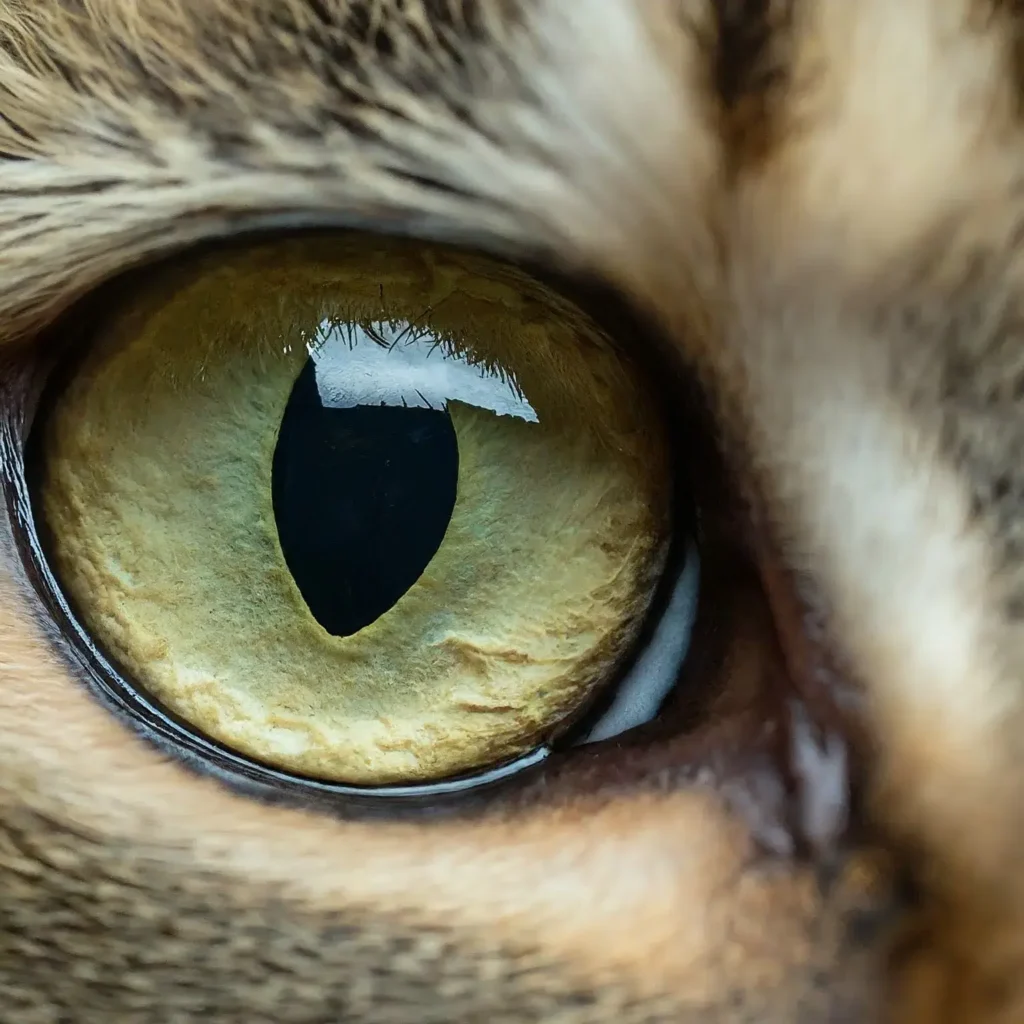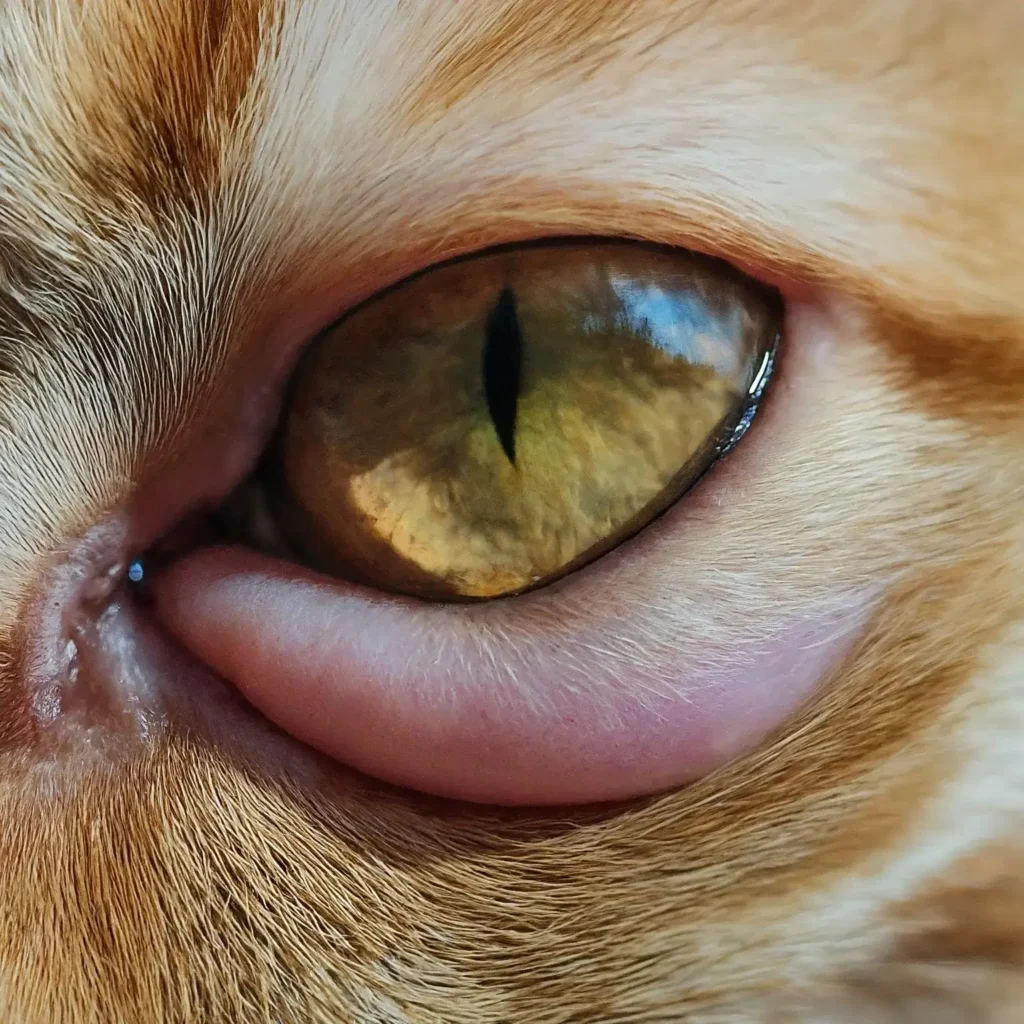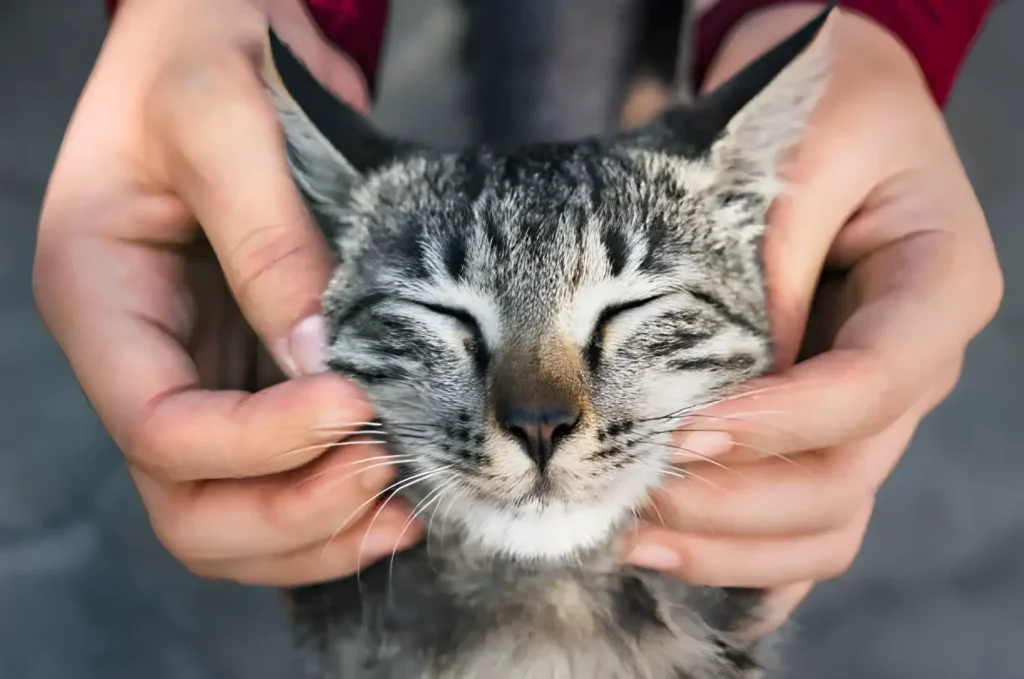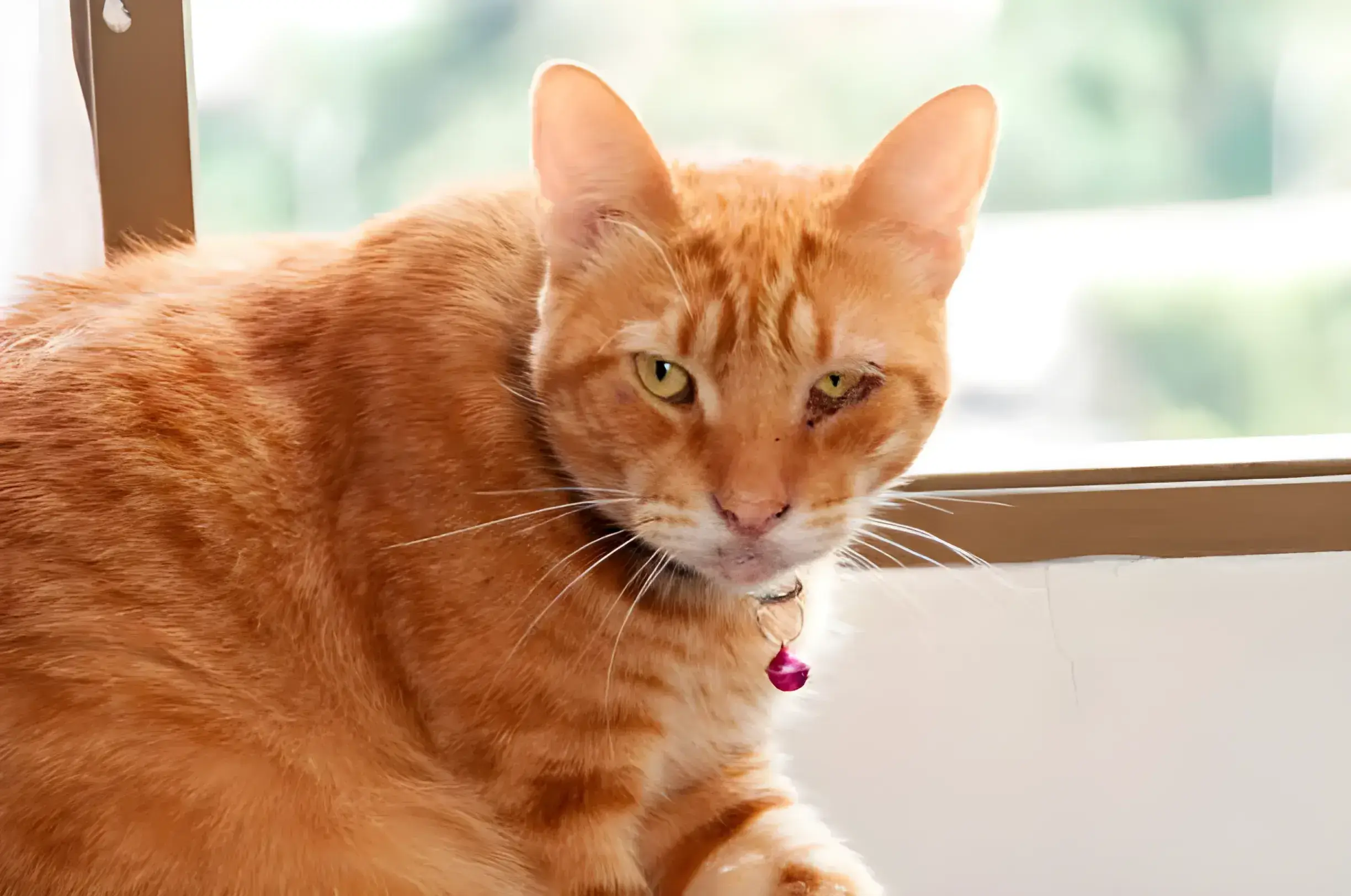Cats sometimes develop puffy or swollen areas under their eyes. While this can be normal for certain breeds, it may also indicate allergies, infection, or other health problems. Don’t worry – we’ll help you figure out what to do.
Understanding Cat Eye Anatomy
Cats naturally have a bit of loose skin under their eyes, which is different from the tight skin of our eyelids. In some breeds, like Persians, this skin is more pronounced and can resemble bags. However, sudden swelling, redness, discharge, or discomfort in this area can signal a problem.
Healthy Cat Eye

This close-up photo showcases a healthy adult cat’s eye. The key features to note are Bright & clear cornea, White sclera, Black & round pupil, Colored iris, and Clean fur around the eye.
Cat Eye with Swollen Fold of Skin

This close-up photo shows a cat’s eye with a swollen fold of skin underneath. This puffiness can be caused by various factors, including Allergies, Conjunctivitis, Foreign body, and Injury.
Possible Causes of Eye Bags in Cats
Allergies: Cats can experience eye irritation and swelling from environmental allergens like pollen or dust. Food allergies can also cause eye problems.
Conjunctivitis: Known as “pink eye,” this infection causes inflammation of the tissues around the eye, leading to redness, swelling, and discharge.
Foreign Bodies: A grass seed, a speck of dirt, or other irritant lodged in the eye can cause discomfort, swelling, and tearing.
Injuries: Scratches or trauma to the eye can lead to swelling and inflammation.
Breed Predisposition: Flat-faced breeds like Persians and the Himalayas are more prone to eye issues due to their facial structure.
Serious Conditions (Less Common): In rare cases, eye bags might be a sign of a systemic illness.
When to Call the Vet
Act quickly if you observe any of these concerning eye changes in your cat:
Persistent Wetness: If your cat’s eyes consistently water, produce thick tears, or have a discharge that refuses to clear up, it warrants professional attention.
Oddly Colored Discharge: Discharge that is yellow, green, or resembles pus is a strong indication of a possible infection requiring treatment.
Redness or Swelling: Any inflammation, redness, or puffiness around your cat’s eyes should be assessed by a veterinarian to determine the cause.
Signs of Discomfort: If your cat frequently squints, paws at its eyes, or acts unusually sensitive to touch around the eye area, a check-up is essential.
Seeming Vision Problems: If your cat acts clumsy, misjudges jumps, or exhibits other signs of potential vision loss, don’t delay in seeking veterinary advice.
Home Care vs. Veterinary Intervention

Safe to Do at Home: If your cat simply has a bit of mild crustiness around the eyes, you can gently wipe the area with a warm, damp cotton ball.
Vet Visit is a Must: For persistent or worsening eye issues, any sort of discharge, or signs of discomfort, your vet is the best source of diagnosis and appropriate treatment. They might prescribe medications like antibiotics or ointments to address the underlying problem.
Prevention Tips
To help your cat maintain bright, healthy eyes:
Maintain a Clean Environment: Minimize dust and potential allergens in your cat’s living space.
Manage Allergies: If your cat has known allergies, work with your vet to develop management strategies to reduce eye irritation.
Schedule Regular Checkups: Routine vet visits provide a chance to spot potential eye issues early, when they’re easiest to treat.
First-Person Owner Experiences
“My Siamese, Luna, developed eye bags and started squinting a lot. The vet diagnosed conjunctivitis caused by allergies. After some medicated eye drops and a change in food, Luna’s eyes cleared up beautifully!” – Emma H.
“My normally energetic Maine Coon, Milo, became lethargic and had swollen eyes with pus coming out. The vet found a foxtail lodged in his eye. Thankfully, they were able to remove it quickly, and Milo recovered well.” – David C.
These are just a few examples of how eye problems can manifest in cats. If you notice any changes in your cat’s eyes, it’s always best to err on the side of caution and consult your veterinarian.
Breed Spotlight
Persians: Their flat faces can cause tear drainage problems, leading to eye irritation and puffiness.
Sphynx: Hairless cats lack eyelashes, which can leave their eyes vulnerable to irritation and dryness.
Scottish Folds: Their folded ears can sometimes increase the risk of eye infections.
Himalayans: Inherit many of the same eye concerns as Persians due to their similar facial structure.
Brachycephalic Breeds: This category includes breeds like Pugs and Burmese, which can have shallow eye sockets that predispose them to eye problems.
Conclusion
Most of the time, small eye bags in cats are simply a cosmetic feature. However, it’s crucial to stay vigilant for signs of trouble. If you notice any significant changes in your cat’s eyes, don’t hesitate to seek veterinary advice for prompt diagnosis and treatment.
The photo featured below the post headline is Credit: Gonzalo Calle Asprilla/istockphoto
I hope you find this post helpful and informative. If Yes’ feel free to share it with your friends!
Frequently Asked Question
My cat has eye bags but seems fine. Should I worry?
It depends on the breed and if the bags are a normal trait. If they appear suddenly, or with other symptoms, consult your vet.
Can I use home remedies for my cat’s eye problems?
It’s best to consult a veterinarian first. While some remedies might seem harmless, they could worsen the issue. Only use sterile saline or products specifically designed for cats and prescribed by your vet.
Are eye infections contagious to other pets or humans?
Some types can be, so it’s best to isolate the affected cat and practice good hygiene when handling them.
My cat’s eye is swollen and red. What should I do?
This could indicate an infection, injury, or other problem. Contact your veterinarian immediately for an evaluation.
Can allergies cause eye problems in cats?
Absolutely! Cats can develop eye irritation, redness, and swelling due to allergies to pollen, dust, mold, and even certain foods.
Is it normal for older cats to have eye discharge?
Some mild discharge is common in older cats, but excessive tearing, colored discharge, or other eye changes warrant a vet visit.
My kitten has watery eyes and crusty eyelids – is this normal?
Kittens are susceptible to eye infections. It’s crucial to see a vet for prompt diagnosis and treatment to prevent potential vision problems.
How do I clean my cat’s eyes safely?
Use a warm, damp cotton ball to gently wipe away any mild discharge. Avoid touching the eyeball itself. If there is persistent discharge or other concerns, consult your vet.
My cat keeps pawing at its eye – what could be wrong?
Pawing at the eye indicates discomfort or pain. This could be due to a foreign body, infection, scratch, or other problems. Have your cat examined by a vet.
Can stress cause eye problems in cats?
While not a direct cause, stress can suppress the immune system, making cats more prone to infections, including eye infections.
Are there home remedies for cat eye problems?
It’s best to avoid home remedies. While well-intentioned, they could worsen the problem. Always consult a vet before putting anything in your cat’s eyes,
My cat has eye bags under one eye, but not the other – should I be concerned?
Yes! One-sided issues may indicate a localized infection, a foreign body, or an injury. It’s important to have your vet examine your cat.

